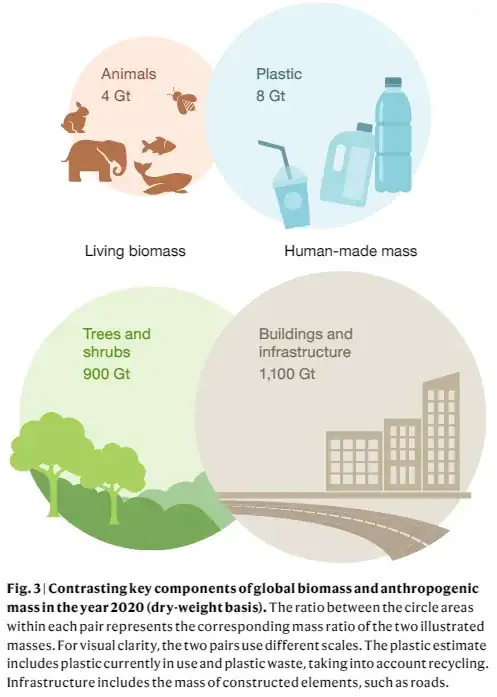An article in Nature, "Global human-made mass exceeds all living biomass" in 2020 has recently gained some attention on social media (see this Twitter thread) possibly because of a striking visualisation of the data.
The claim, if true, is certainly striking but, I suspect, many of the numbers are based on inherently vague sources. So, despite the claim appearing originally in a prestigious journal,is it a plausible or reliable claim?
